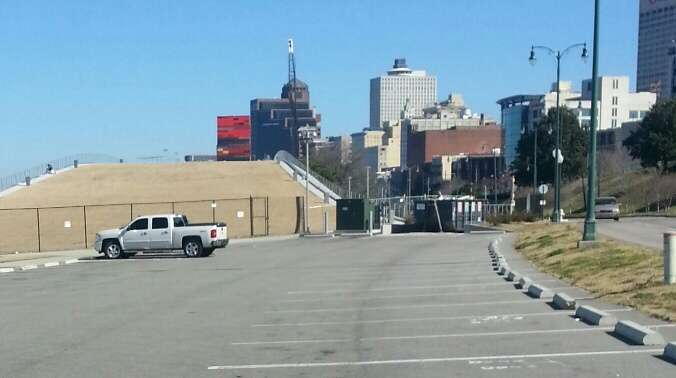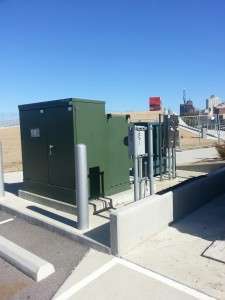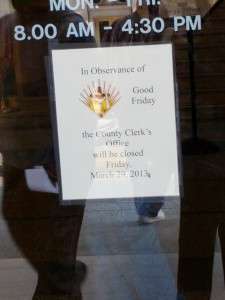It’s hard to think of anyone who has more strongly supported Beale Street Landing than us.
But these days, we look at the project and mostly think of what might have been as a result of a series of decisions that have weakened Beale Street Landing’s impact and destroyed its urban design integrity.
It’s hard to even summon up the energy these days to argue with people who say Beale Street Landing now has been made into just an average public project. That’s certainly the case when it’s compared to some of the landmark riverfront projects constructed around the U.S.
It’s all too bad because the riverfront has long need needed a placemaking project that brings vibrancy and a connection to the water, and there was such an opportunity for Beale Street Landing to be utterly spectacular.
We still believe that it will prove a valuable addition to the riverfront, but we can only hope that at some point in the future, the mistakes made in the pursuit of cost savings will be corrected.
Three Strikes
The first bad decision was to add the elevator box to the top of the building, destroying the sloping, sweeping architecture that spoke to a sensitivity to natural forms. In essence, the box is a wart on what was designed as an appealing face for downtown. There were options to provide elevator access but without destroying the architectural intent.
The second bad decision – an unpardonable one – was to intrude into Tom Lee Park to build a parking lot south of Beale Street Landing that destroyed the connectivity between the park and the project. We don’t know if it was the result of value engineering or groupthink, but either way, it is unquestionably an assault on the high quality public realm that Beale Street Landing should have been.
We assume that it was thought that parking adjacent to Beale Street Landing was crucial to attract special events and diners, but there is no way to put lipstick on this pig. The decision is simply indefensible. Putting a parking lot into downtown’s most important park required a compelling justification that we’ve yet to hear – mainly because we don’t believe it exists.
The third bad decision can also be found south of Beale Street Landing. Walking north from Tom Lee Park past the paved parking lot, visitors are now greeted with yet another one of those visually-jarring transformers that seemingly populate – and visually pollute – most of downtown’s most important locations.
However, at Beale Street Landing, the RDC doubled down, adding an industrial garbage container to assault the eyes and nose.
All in all, it just makes us sad to consider what could have been. Beale Street Landing and its connections to Tom Lee Park should have been Memphis’ example of what model public realm looks like, but instead, it falls short of what this high-profile deserved.
Bad Friday Experience
It’s always amazed us that city and county governments – ignoring separation of church and state – close in observance of a Christian holiday, Good Friday, but the Shelby County Clerk’s office seem oblivious to the fact that not every one who walks through its doors are Christian.
In fact, only 64% of Memphians even consider themselves religious and this includes Jewish and Muslim Memphians.
Rather than put a simple sign noting that it was closed, the Shelby County Clerk’s Office took the opportunity to do a bit of proselytizing on the taxpayers’ dime. The sign on the office’s door include some classic Christian crucifixion imagery, which was inappropriate.
It was a reminder that despite its presence in an major urban environment, there are times when Shelby County Government still acts decidedly like an overgrown rural government.






Where design and implementation are concerned, Beale Street Landing has become a tragedy of Shakespearean proportions. A deadly brew of engineers and architects who did not value the original concept and whose sole purpose was to reduce costs, an agency that only superficially values good design as a runner-up to deliverable products and an apathetic and largely uneducated public has resulted in yet another half-a$$ed (I apologize, but I cannot think of a better description) project that adds only marginal value to the existing riverfront. The final product will fail to inspire residents to venture to the river in greater numbers and will fail to live up to its potential as a great urban waterfront space.
In a way it is appropriate that Beale Street Landing- including the adjoining parking lot- is such a place. Look at its neighbors. Both Tom Lee and the Cobblestones appear and function as little more than afterthoughts when contemplating how to program “white space” at the edge of the map. It is hardly shocking when one considers a national expert recently recommended replacing a lane of traffic on Riverside Drive with parallel parking only to be rebuffed by the RDC, with the residents of Memphis can’t parallel park. Pathetic. If anything, the new Beale Street Landing fits right in with the other public spaces along the river. The landing as it was originally conceived and planned would have been out of place as a unique and great waterfront landing and public park.
This also makes me question the value of the RDC. As I understand it, Its original intent was to remove the riverfront, its maintenance and improvements as political footballs and prevent these public areas from succumbing to the degradation and lack of maintenance being experienced by the city’ other public spaces. Instead, as we have seen with Beale Street Landing, the riverfront is still an easy target for backroom dealing and subject to the winds of political change. No doubt, there was a need to complete the project. Its perpetual state of construction and the hardship along the waterfront that created could not continue. However, the push for “completion” at all costs has eliminated the potential for future upgrades with the idea of eventually implementing the original concept. Short term goals were once again given priority over long term vision and the greater potential inherent in the project. Personally, projects like Beale Street Landing have greatly discouraged me regarding the ability of this community to plan AND EXECUTE the projects necessary to create a great city. I would much rather future efforts underestimate and be less ambitious in order to improve their chances of being built as originally planned without the deadly introduction of “value engineering”. Better to have a well-executed small statement than a poorly executed and mutated albatross slumped over the riverfront.
I, too feel very strongly about Beale Street Landing. Memphis was the final “big city” along the Mississippi with an undeveloped riverfront. Icing on the cake – due to river fluctuations, we will never have to worry about developing the AR side, thus ensuring our perpetual enjoyment of beautiful natural views.
What’s the best (worst) could do? Exactly what we did…
We, as taxpayers, have spent ~$42MM on a big lump. With a funny looking spiral. And a garbage dumpster. And more ugly parking.
As with so many projects, we did a great job of dreaming big – the winning design was beautiful, engaging, and sustainable. And our leaders stayed true to form – letting mismanagement, lack of bravery, and cost overruns destroy the dream.
Congratulations, Memphis. A beautiful vision reduced to a $42million lump with a grassy roof.
Not even a real grassy roof. One distorted by that monstrosity of an elevator shaft.
The fourth bad decision (actually first) was to construct the grass roofed cafeteria in the first place. It blocks the pathway and views along the river and will attract cars that will destroy the comfort of being at the water’s edge.
I vote to move all events to shelby farms to avoid having to look at this urban eyesore.
We want to make our position clear. While we are disappointed in the bad design decisions that have been made, Beale Street Landing is much-needed to animate a moribund, deadly dull riverfront experience. No city on a river has done a poorer job of creating a point of arrival where visitors and residents can connect with the most dominant, most special natural resource we have.
Here’s what we wrote way back when:
Located as we are near the foot of Union Avenue, we have a front row seat as witnesses for the consternation and confusion felt by visitors when they wander down from the Peabody Hotel and nearby restaurants to experience the nation’s mightiest river.
Down the hill they walk, every day, excited and expectant for their first view of Old Man River. And yet, when they arrive, their attention on the river is short-lived. Almost immediately, they look up and down the riverfront for the grand public promenade that they assume exists there somewhere. Normally, they wander aimlessly along the riverwalk, unable to even see a place where they can buy ice cream or a soft drink.
That’s why we were so pleased when Memphis City Council approved $4.8 million to get Beale Street Landing under way. Finally, our local equivalent of Everest will have the great public place that it deserves. More importantly, we will have the linkage that connects our riverfront to our downtown and turns the city around so that it faces the water.
It sometimes seems that anything the Riverfront Development Corporation touches is immediately opposed by some people, but surely Beale Street Landing is something all of us can support. That’s because the benefits of the project touch so many needs that we have. Best of all, it would be a direct attack on the image of Memphis as a slow-moving, sleepy river town.
If there is one thing that we can do downtown that would make it more successful, it is to make it more vibrant. Beale Street Landing is a major step in the right direction with its modern docking facility, its grand civic plaza, and its dramatic overlook and sense of arrival.
The $29 million ($10 million from federal and state funds), five-acre project would be located at the terminus of legendary Beale Street, stitching together downtown’s two dominant legends into a single fabric. The consensus that emerged from the public meetings for the Riverfront Master Plan was that Beale Street Landing needs to be a top priority, and that sense of urgency was endorsed by the Urban Land Institute in its subsequent review.
The design for Beale Street Landing was chosen from 170 submissions in our community’s first international design competition. Managed by the UrbanArt Commission, Memphis Chapter of the American Institute of Architects and the RDC, the jury selected Buenos Aires architects Javier Rivarola, Gustavo Trosman and Richardo Norton.
As designed, the project features a number of landscaped “pods” that float over the riverfront, connected by pedestrian bridges and joined to a docking area for the large riverboats that moor here almost weekly and smaller boats that populate the river. The docking area in particular responds to a need for downtown, where we haven’t moved too far away from the old days when a riverboat was tied to a tree on the bluffs.
Of course, in the end, Beale Street Landing shouldn’t be built for visitors or tour boats. It should be built for those of us who live here, answering the need for the spectacular civic space that weaves together the urban fabric and using the most iconic asset of our past to create a new iconic image for the future.
Most encouraging of all is that the project turns our attention to the design details of our city, a subject too often neglected on our civic agenda. Perhaps, just perhaps, Beale Street Landing could even be inspiration for a new design ethos for Memphis.
If we have learned anything from the lessons of other cities, it is that places are complex organisms made up of interrelated activities; that projects work best when they connect to a city’s unique character, and most of all, they are about creating a place, not a plan.
Great cities around the world are reclaiming their riverfronts and capitalizing in powerful ways on the bonds between their people and their rivers. No city has more impressive ingredients to work with than Memphis, and Beale Street Landing is the precisely the kind of project that indicates to us what our real potential is.
While it is tempting to justify the project on the basis of economic impact, that would really miss the point. Most of all, grand public spaces like this make cities more livable, they are the physical embodiment of what cities are all about and they create a sense of place like nothing else.
That’s why Beale Street Landing is anything but a frill. It is a core investment in the kind of vibrant, appealing, connected, grand public spaces that we need. After all, isn’t beauty the most important public service of all?
What will become of this excellent post? I bet nothing. No one in Memphis leadership is ever held accountable.
I call on Tom to form a group like Delta Does Memphis to lobby our civic and business leaders to address some of the issues that are so thoughtfully discussed on this blog.
Without a venue to help us lobby for better design we are left with only frustration and hopelessness.
The original concept and proposal for BSL was incredible (my opinion only). Poor implementation, value engineering and political grandstanding resulted in a product that is mediocre at best. The end result is due in part to a lack of flexibility at multiple levels and organizations.
For example:
Based on Jeff Speck’s recommendations for Riverside Drive and utilizing the UDC standard for on-street, parallel parking- Riverside Drive between Beale Street and the south end of Tom Lee Park could accommodate approximately 193 cars. The existing lots on Tom Lee (including the one serving the landing) can park 182 vehicles. Thus, we would gain 11 parking spaces while also removing the intrusion of surface parking in Tom Lee. Include the section of Riverside along the Cobblestones and we would gain an additional 83 parking spaces. As a side note, the UDC standard for parallel parking is a stall length of 22’-6” which is nearly long enough to allow a driver to pull into a space without the reverse movement typically associated with parallel parking. If we were to add a 7’ box between every other parking space, we would reduce the overall parking count somewhat, but it would totally eliminate the need for the reverse movement required for most parallel parking. However, the RDC and those associated with BSL have already dismissed this proposal based on notions of what maneuvers they believe drivers are (and are not) capable of performing.
Perhaps we should include disclaimer signage at various points around BSL, Tom Lee and the Cobblestones that states “We would have done more to fulfill the potential these public spaces possess, but Memphians are not capable of parallel parking”. Excuses, excuses.
John Reed-
I agree!
Interesting, I had a conversation with Tom about this very idea a week ago.
The group would be a group of citizens that value pride of place : sidewalks that are not broken, smart modern design that looks to the greatest cities in the world for inspiration. The group should not take on too much. But what is needed in Memphis is a collective voice that is willing to say uncomfortable things to those who have the power to effect change. Why does the city not enforce sidewalk codes? Why is good design the first thing to be axed when budget issues come to the surface ? Who can help educate developers and design review boards about good urban design ?
Charette! Charette! That’ll show em-just look ast Sears Midtown!
Harumph!
Urbanut – If I make the sign, will you help me hang it? We can also take bets on how long it will stay up…
Well, folks, if you want to set up a FB group to advocate for better design in Memphis, count me in. There’s no time like the present.
Gwyn- if you have the signs, I have the post hole digger.